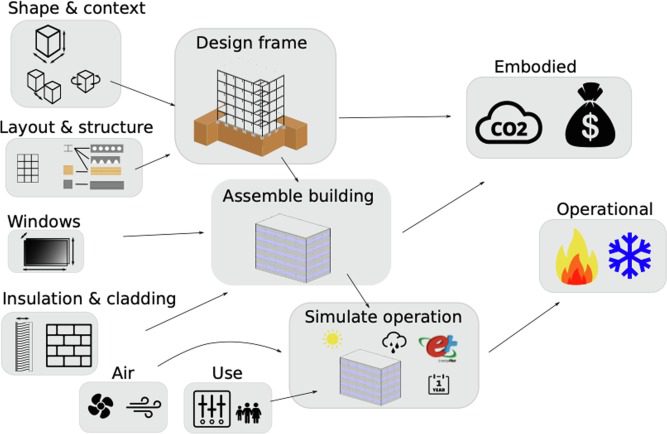What really matters in multi-storey building design? A simultaneous sensitivity study of embodied carbon, construction cost, and operational energy

Buildings account for over one-third of global emissions and energy use. Meeting climate pledges will require achieving high operational energy efficiency with low embodied impacts in new construction. Yet, a systematic identification of the relative influence of building design parameters on both operational and embodied efficiencies has rarely been attempted. In this paper we explore for the first time the sensitivity of a wide range of design and operation parameters in terms of embodied carbon, construction cost, as well as heating and cooling loads for multi-storey buildings. We devised a model to estimate the relative importance of a large set of input variables, describing a building’s shape, size, layout, structure, ventilation, windows, insulation, air, and use for residential and office multi-storey buildings, across different climates. We found that increasing building compactness, using steel or timber instead of concrete frames, lowering window-to-wall ratio, choosing the most suitable glazing, and employing mechanical ventilation with heat recovery are the most important measures to decrease embodied emissions and operational energy. The most significant trade-offs with construction cost were found for the choice of frame material and in the decision whether to install mechanical ventilation. We estimate that 28–44% of yearly heating and cooling energy and 6 Gt cumulative embodied CO2e until 2050 could be saved in multi-storey buildings, without employing new technologies.
